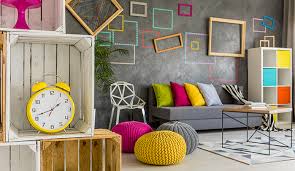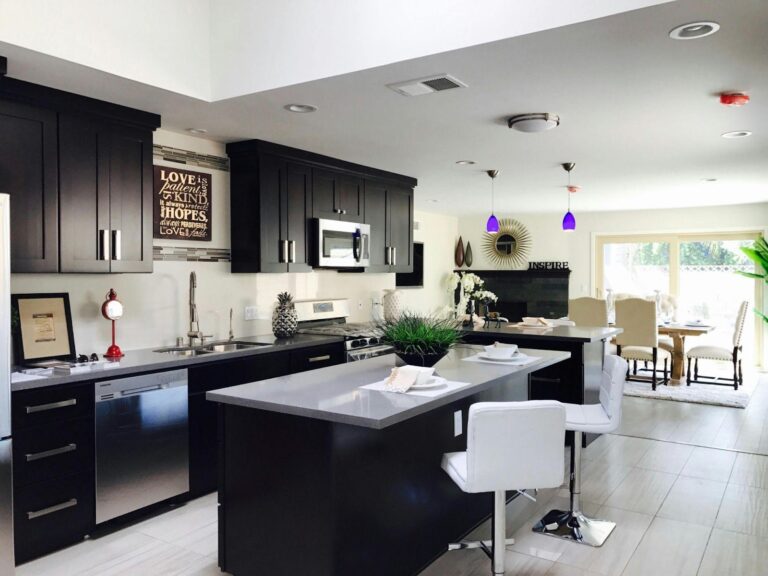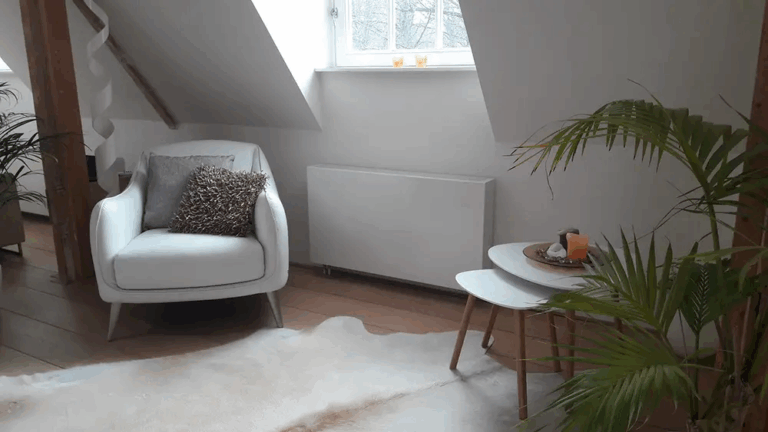
When it comes to decorating small spaces, one of the most effective ways to create the illusion of more room is by choosing the right paint color. A well-chosen color can open up a small room, making it feel airy, expansive, and welcoming. Whether you’re dealing with a cramped bedroom, tiny living room, or a compact kitchen, the right paint hues can help you transform your space. In this article, we’ll explore the psychology of color, share some of the best paint color ideas to make your small rooms feel bigger, and offer tips to maximize space visually.
Understanding the Psychology of Color
Before diving into specific color suggestions, it’s important to understand how paint colors affect the way we perceive space. Color has the power to influence how large or small a room feels. The psychology of color is based on how different hues interact with light and our senses.
Light colors, such as whites, light grays, and pastels, reflect more light, which can make a space feel brighter and more expansive. In contrast, darker shades tend to absorb light and can make a room feel smaller and more enclosed. Additionally, colors with cooler undertones, like soft blues and greens, often have a calming, expansive effect, as they seem to recede into the background.
On the other hand, warm tones, such as reds and oranges, bring warmth to a room but can also make it feel more intimate. These hues work best in larger rooms or spaces where you want to create a cozy ambiance. By understanding the psychology of color, you can strategically select shades that visually increase the size of your space.
Best Paint Color Ideas to Make Small Rooms Feel Bigger
Choosing the right colors for your walls is key to creating a more spacious feel. Below are some of the best paint color ideas for small spaces:
Light Colors
Light shades are among the most effective in creating a sense of openness in small rooms. White, off-white, and soft gray colors are classic choices that not only make a room feel brighter but also give the illusion of more space.
- White and Off-White: These colors reflect light and create a clean, minimalist look. White works wonders in any room, especially those with limited natural light. It’s a timeless choice that offers versatility and makes spaces appear larger. Off-white shades, such as cream or eggshell, add a hint of warmth while still maintaining that airy, expansive feel.
- Soft Grays and Light Blues: Light gray is another excellent option for small rooms. It reflects light but retains a soft, neutral tone that complements a variety of furniture styles. Similarly, soft blues or muted greens can add a touch of color without overwhelming the space. These cool colors have the added benefit of creating a tranquil, open atmosphere.
Neutral Tones
Neutral paint colors are incredibly versatile and can work in almost any small room. Shades like light beige, taupe, and warm gray are perfect for those who want to keep the space feeling neutral and calm.
- Beige and Light Taupe: These warm neutrals are ideal for creating a serene, cozy environment. Beige can brighten up a small room without making it feel too stark or sterile. Light taupe adds warmth while maintaining a light and airy feel. Neutral tones are particularly effective in spaces that also serve multiple functions, such as a small home office or living area.
- Warm Grays: A warm gray with beige or brown undertones can soften the edges of a small room, making it feel more inviting while still maximizing space. These colors pair beautifully with a variety of accent colors, allowing for versatility in decorating.
Cool Colors
Cool-toned colors, including soft blues, pale greens, and cool grays, can work wonders in small spaces. These shades visually recede, giving the impression that a room extends further than it does.
- Soft Blues and Greens: Light blue tones, such as powder blue or seafoam green, can evoke a feeling of calm and openness. These colors are particularly suitable for bedrooms and bathrooms, where a serene environment is desired. Pale green hues, like mint or sage, also have a similar effect, making the room feel fresh and airy.
- Cool Grays: A cool gray with blue undertones can help create depth in a small room, giving the illusion of more space. When paired with white trim and light-colored furniture, cool gray walls can make a room feel modern and expansive.
Accent Colors
While lighter colors dominate the small-space palette, accent walls, and strategically placed colors can add depth without overwhelming a room. Darker or bolder colors can be used on one wall, in furniture, or as décor accents.
- Consider incorporating accent walls in deep hues like navy blue, charcoal, or even emerald green. These tones draw attention to specific areas of the room, creating contrast and preventing the space from feeling too monotone.
- It’s important to use bold colors sparingly consider applying them to one wall or as part of the room’s décor (like throw pillows or rugs). This will allow you to achieve a sense of contrast without shrinking the space.
If you’re looking for professional help in selecting the right colors for your space, residential painting services in Winnipeg can provide expert advice and ensure that your paint choice is both aesthetically pleasing and functional.
Tips for Choosing the Right Paint Finish
Paint finishes also play an important role in making a room appear bigger. The type of finish you choose affects how light interacts with the surface and can either help or hinder your space-enhancing goals.
- Satin or Eggshell: These finishes are ideal for small rooms because they reflect light without being too glossy. They provide a subtle sheen that helps create a bright, airy environment. Satin finishes are durable and easy to clean, making them great for high-traffic areas.
- Semi-Gloss: If you want to enhance the feeling of space further, consider using a semi-gloss finish. Its glossy surface helps bounce light around the room, making the space feel larger. However, be mindful of using this finish too much, as it can create a shiny, reflective surface that draws attention to imperfections.
- Matte: While matte finishes can soften a room and create a cozy atmosphere, they tend to absorb light and might not be the best choice for very small spaces. However, they can work well in rooms that receive plenty of natural light.
Tricks for Creating the Illusion of Height and Space
To further enhance the perception of space, try these paint-related tricks:
- Vertical Stripes: If you want to create the illusion of height, consider painting vertical stripes. These can draw the eye upward and make ceilings appear taller. Keep the stripes subtle, using shades that are only a few tones apart for a sophisticated effect.
- Ceiling Color: Light-colored ceilings are a must in small rooms. A bright white ceiling creates a sense of openness and height. Alternatively, painting the ceiling a slightly darker shade than the walls can make the room feel taller and more spacious.
- Trim and Doors: Painting trim and doors a light color, such as white or light gray, can make the walls seem higher. This subtle detail can have a big impact on a room’s overall feel.
Avoid These Colors and Mistakes in Small Rooms
While certain colors can make a room feel bigger, others can make the space feel even smaller.
- Avoid Dark, Overpowering Colors: Dark shades like deep reds, purples, or charcoal can make a small room feel closed in and cramped. If you love bold colors, use them sparingly as accents rather than covering entire walls.
- Too Many Contrasting Colors: While contrast can add visual interest, an overabundance of contrasting colors can make a small room feel disjointed and chaotic. Stick to a limited color palette to maintain harmony and balance in the space.
Conclusion
Choosing the right paint color for your small space is one of the simplest and most effective ways to make a room feel larger. Lighter tones, cool colors, and strategic use of accent colors can all help create the illusion of space. When combined with the right finish and a few design tricks, you can transform even the smallest rooms into areas that feel open and inviting. Don’t be afraid to experiment, but also consider seeking guidance from experts to ensure your vision comes to life beautifully.
Write and Win: Participate in Creative writing Contest & International Essay Contest and win fabulous prizes.


